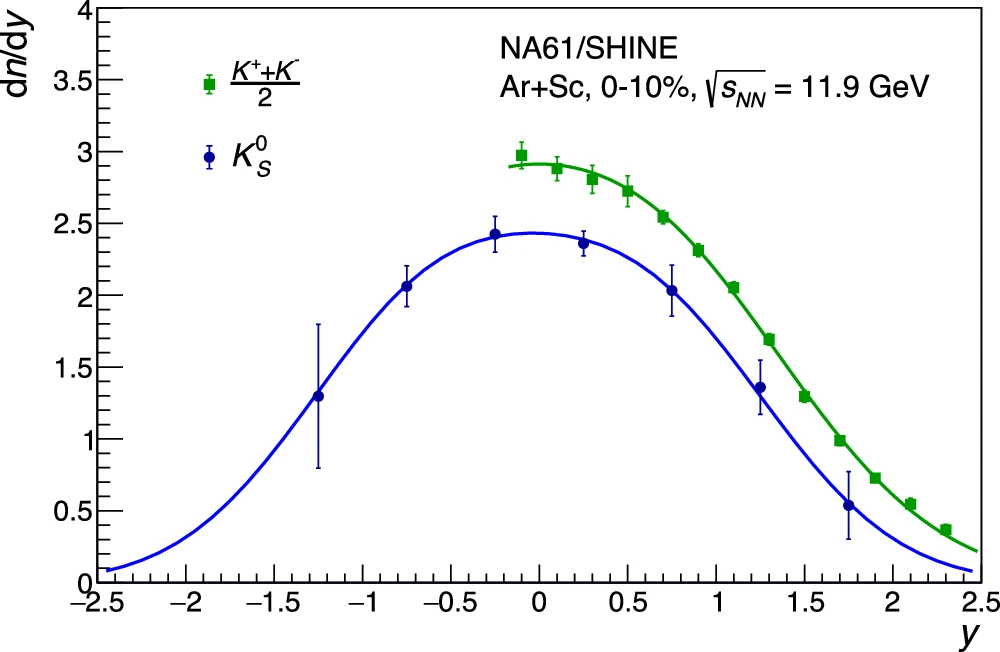Evidence of isospin-symmetry violation in high-energy collisions of atomic nuclei
A paper titled Evidence of isospin-symmetry violation in high-energy collisions of atomic nuclei was published in the prestigious journal Nature Communication (Nature Commun. 16, (2025) no.1, 2849). The authors are the NA61/SHINE collaboration including a group of a few scientists from our Faculty.
The quarks (up, down, strange, charm, beauty and top, called flavours) interact via the strong interaction. Quarks are the constituents of baryons, like proton (uud, u = up and d = down quark), and mesons (composed of quark and antiquark). The effective masses of u and d quarks are very similar and very low compared to other quarks. It makes the strong interaction preserving approximate isospin-symmetry between particles containing u and d quarks. As an example of this symmetry, mass of neutron (udd) is larger than proton (uud) only by ∼ 0.1%.
With full preservation of isospin symmetry, identical numbers of isospin-symmetric particles should be produced in collisions of isospin-symmetric atomic nuclei. This should especially apply to the production of kaons – mesons that, in addition to the strange quark (or antiquark), also contain an antiquark (or quark) u or d (K0 = d¯s, K+ = u¯s, K− = u¯s, K¯0 = d¯s).

Generation of electrically charged quarks K (i.e., K+ i K−) and electrically inert kaons K0 and antikaons K¯0 has been measured by the NA61/SHINE collaboration in the interaction of argon and scandium nuclei at an energy of 11.9 GeV per nucleon pair in the center-of-mass system.
We found that charged K mesons are emitted much more frequently – by (18.4 ± 6.1)% – than neutral mesons K. Previous measurements are consistent with this result, but were not significant in view of their insufficient measurement accuracy.
The models of hadron production, which include all known isospinsymmetry breaking effects can explain only a fraction of the observed excess. New systematic, high precision measurements and theoretical efforts are still needed to establish the origin of the observed large isospin-symmetry breaking.
The coauthors of this publications affiliated with the Faculty of Physics and Astronomy UWr are Z. Fodor, M. Kuchowicz, M. Lewicki, M. Naskret, R. Szukiewicz, L. Turko, O. Vitiuk i E. Zherebtsova.
